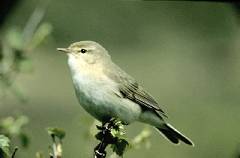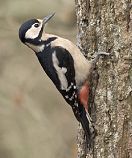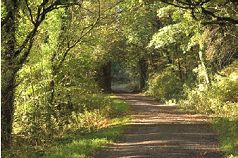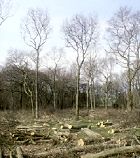Summary




Summary
The populations of several woodland bird species have recently declined in Britain, especially in broadleaved woods. This is thought to be due to changes in vegetation structure, particularly the loss of understorey vegetation.
Likely causes are reduced levels of woodland management (e.g. thinning, coppicing) which appear to have resulted in heavier shading; and increased numbers of both native and non-native deer which have led to more browsing.
We have collaborated in a field study to further understand the causes of the declines and propose solutions to policymakers and forest managers.
The Research project FINAL report (2014) was published by DEFRA in June 2014 and it is available from their website.
Research objectives
The project aimed to investigate how habitat quality for woodland birds is affected by woodland management and deer browsing by undertaking a large-scale survey of lowland broadleaved woodland in the UK. This was complemented by a reference survey of upland conifer woodlands where populations of the target bird species have remained more stable. Forest Research’s role has been to:
- Establish the field study sites
- Assess the deer densities and deer impacts
- Interpret implications for future forestry policy and practice.
Background
Priorities for research on woodland birds were established at a Forestry Commission/Defra workshop in 2009.
Forest Research staff contributed to the major conference on Woodland Birds: their ecology and management in 2006. The proceedings were published as a special issue of the journal IBIS.
Field studies
The broadleaved woodland survey involved around 150 study plots on land managed by the Forestry Commission and 150 study plots on privately owned land. Study sites were established in two regions:
- Southern England (Wiltshire, Hampshire, West and East Sussex and Kent)
- The Marches (Powys, Monmouthshire, Shropshire and Gloucestershire).
Sites span three deer density categories within each region: high, medium, low.
On each study plot the abundance of breeding birds, the vegetation structure and the deer browsing impact was measured. The field work was carried out by qualified field surveyors from the Royal Society for the Protection of Birds (RSPB) and the British Trust for Ornithology (BTO).
Funders and partners
![]()
![]()
This research project has been commissioned by Defra and the Forestry Commission to improve our knowledge of the habitat needs of declining woodland bird species.
![]()
![]()

![]()
Forest Research, in collaboration with The University of Nottingham, RSPB and BTO, have been engaged to carry out the research.
Forestry Commission policy
Trends in bird populations are considered a good reflection of the overall state of wildlife and countryside, and long-term records of bird species and numbers can be an important indicator of biodiversity. Woodland bird populations in the UK have declined since 1970, although not as much as farmland birds. The Forestry Commission has used woodland birds as an indicator of sustainable forestry.
Grants were made available within English regions to aid management (for example, see The Yorkshire and The Humber Woodland Bird Project and Grant scheme to help North West’s woodland birds) and guidance has been published (for example see New guidance on managing woodlands to protect birds).
Status
The project started in February 2011 and was completed in April 2014.
2012 was the first main field season.
Contact
For further information contact:
